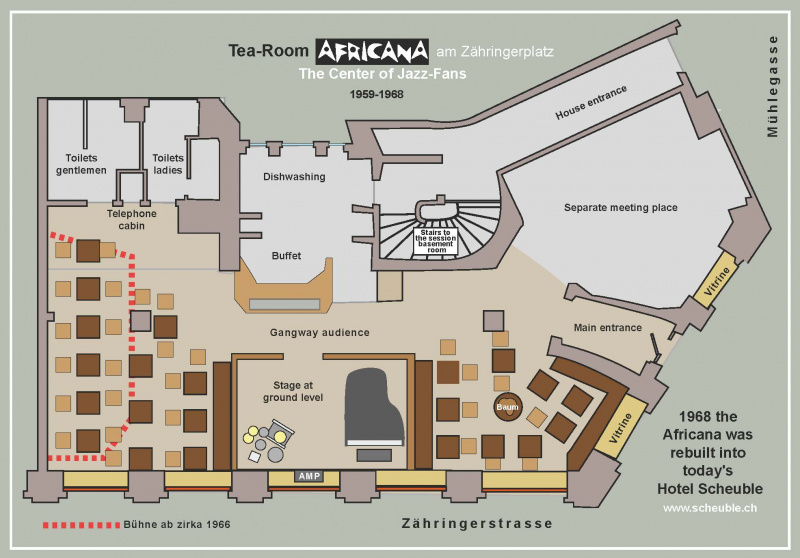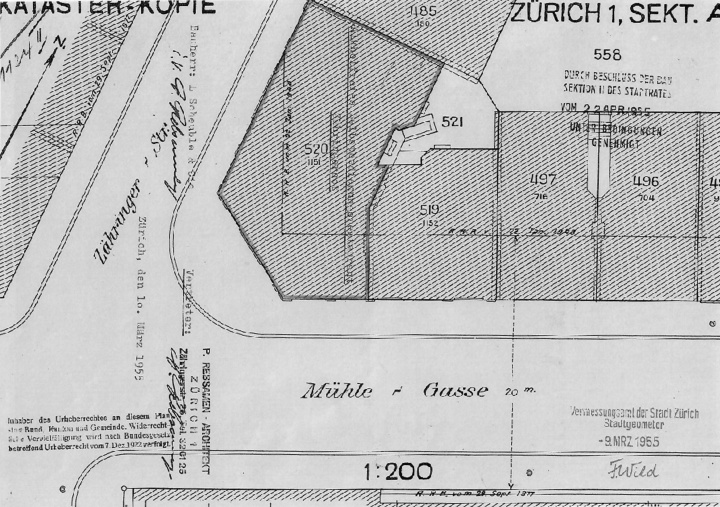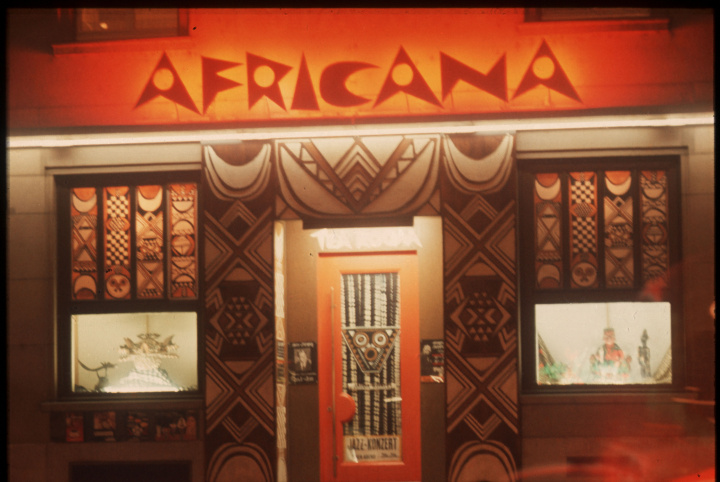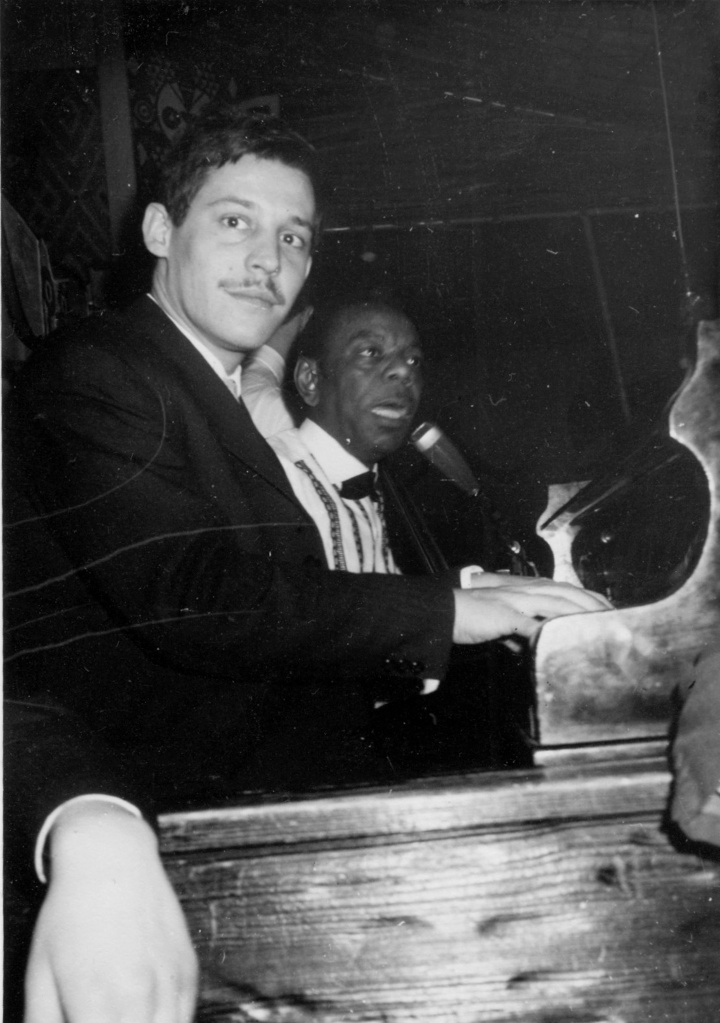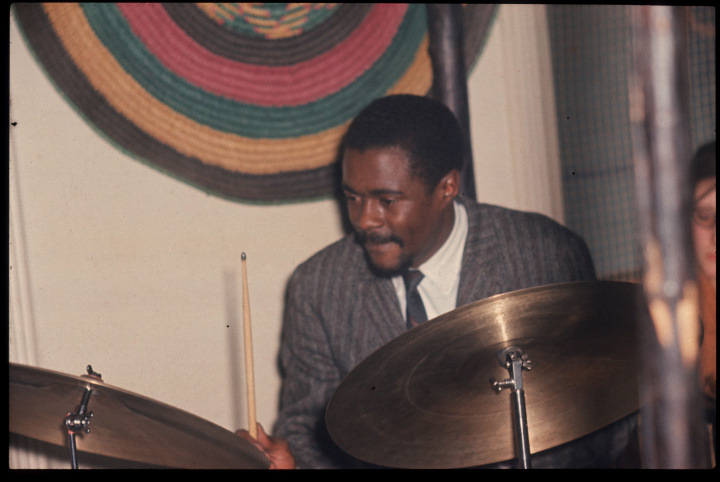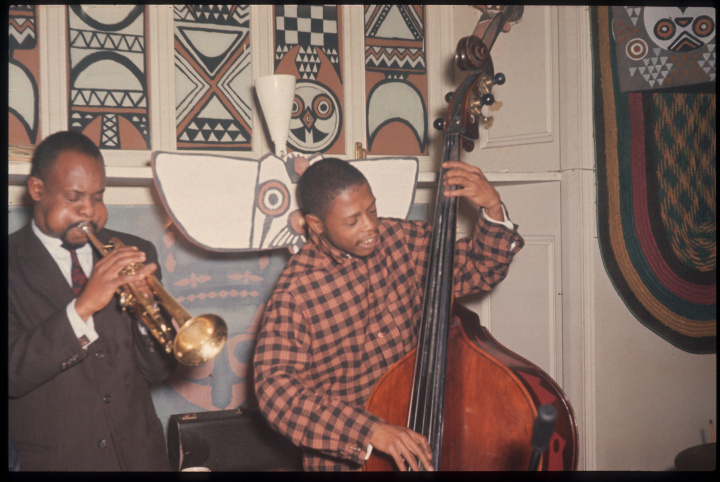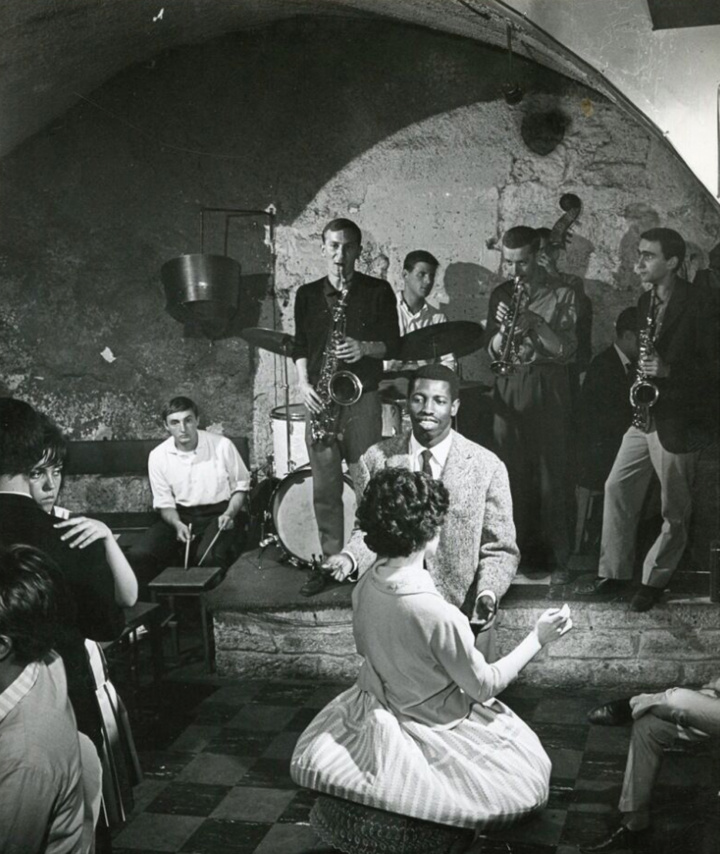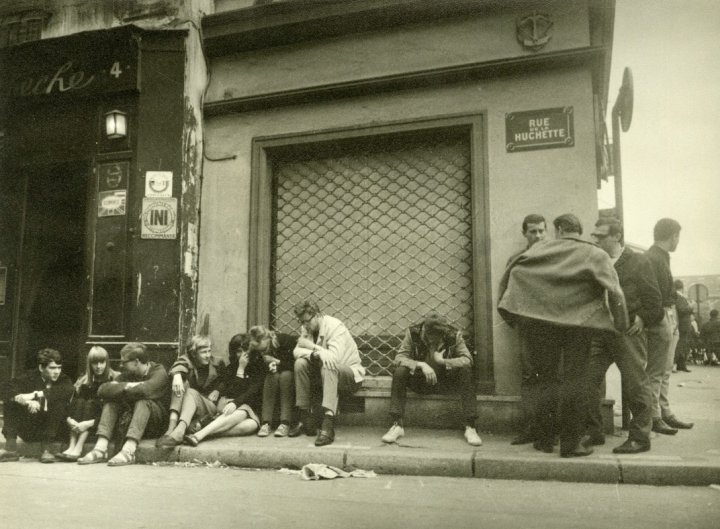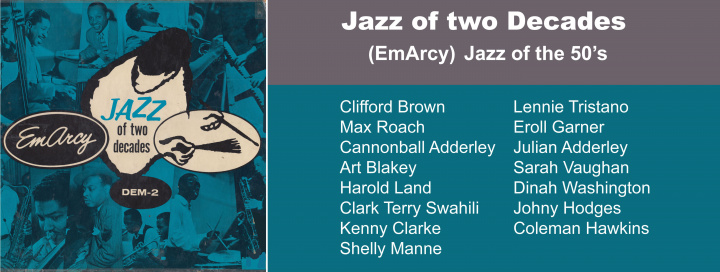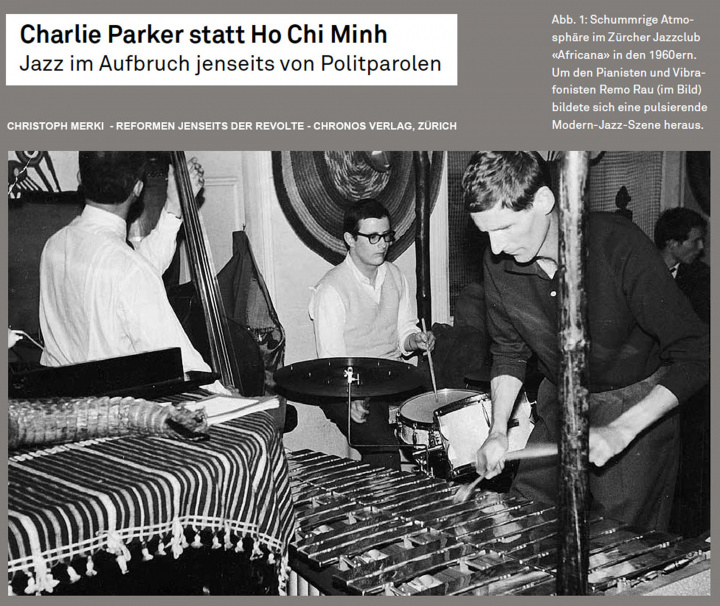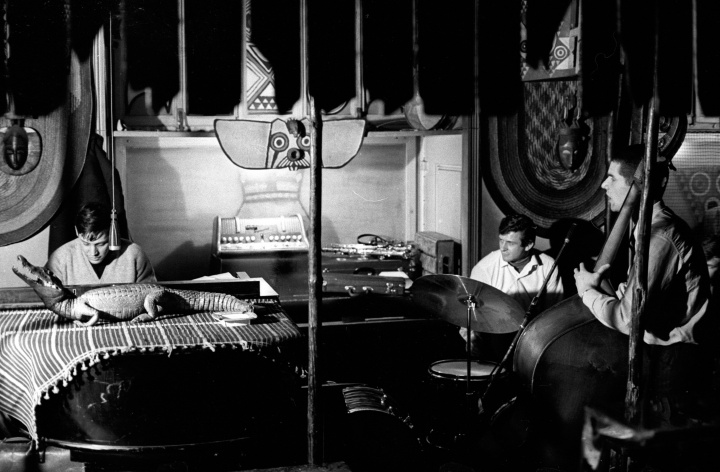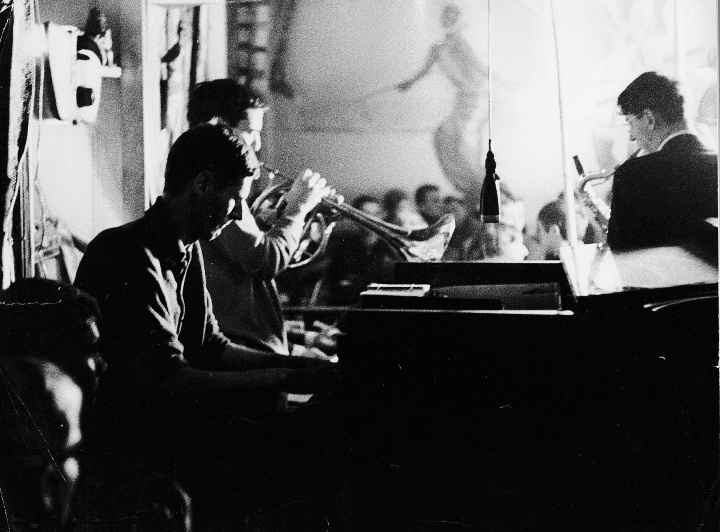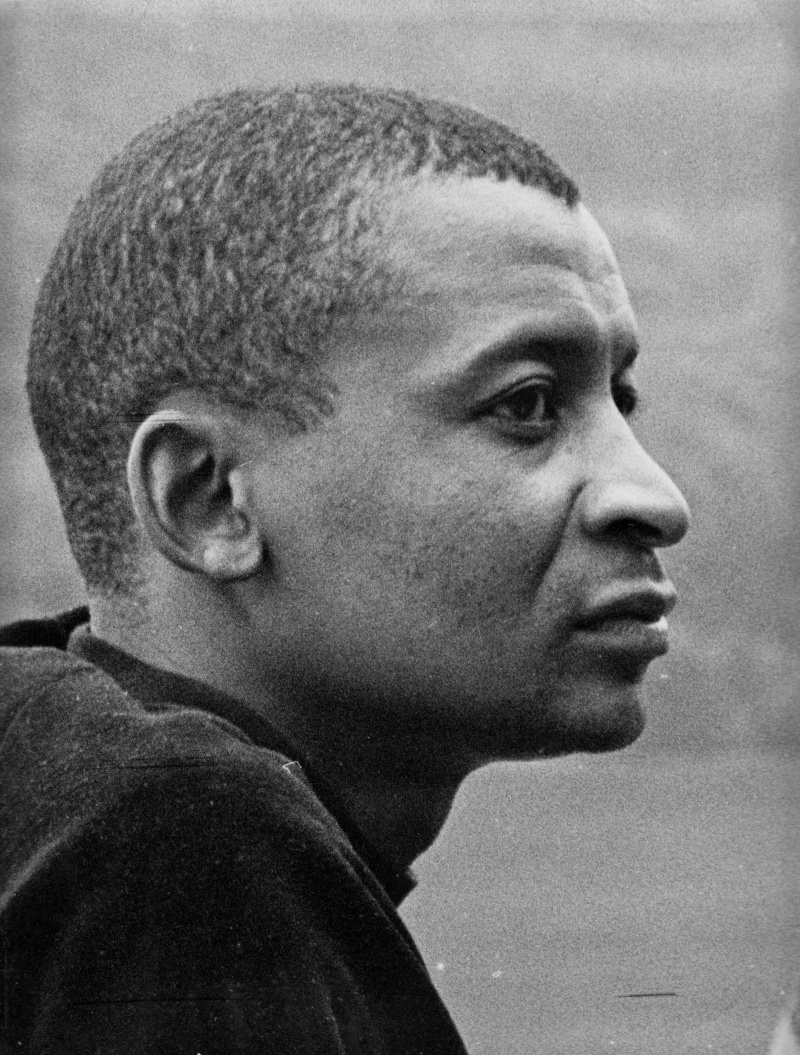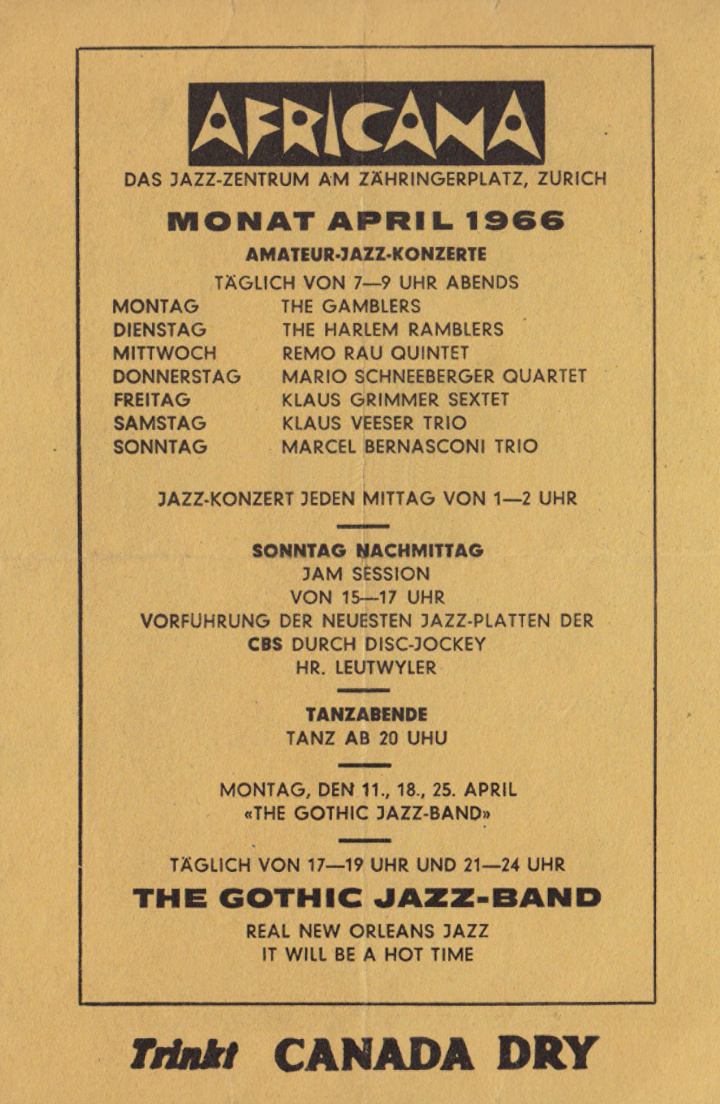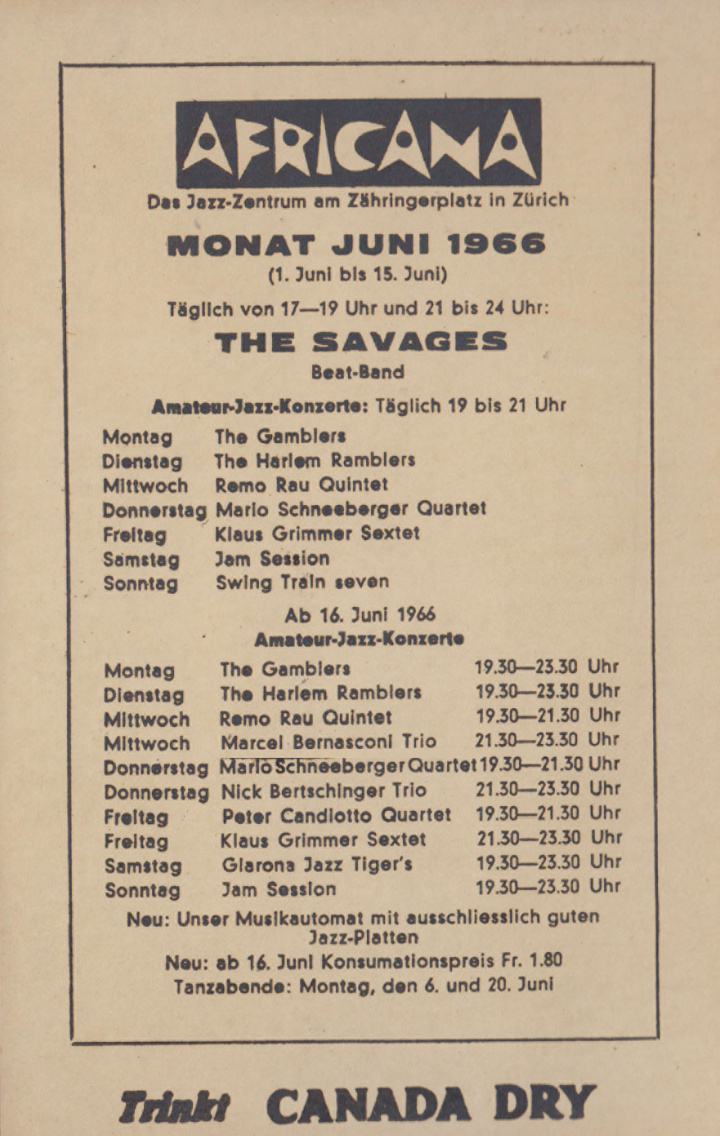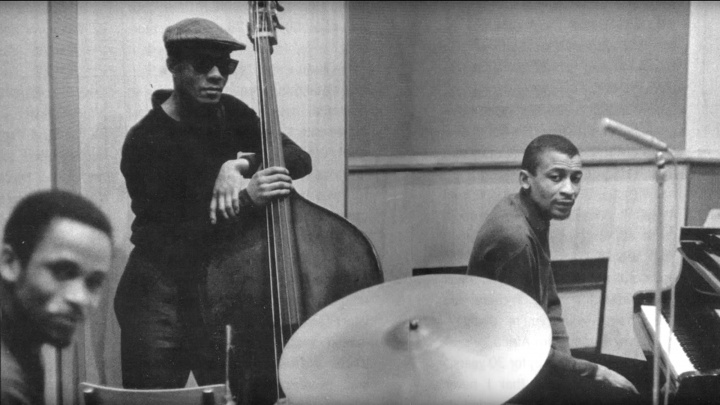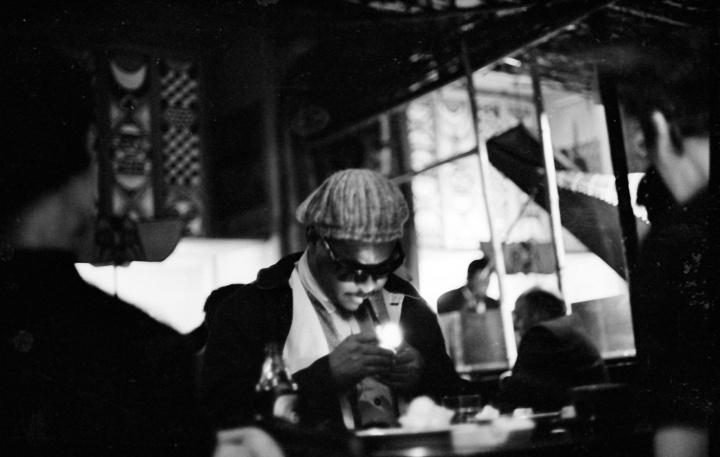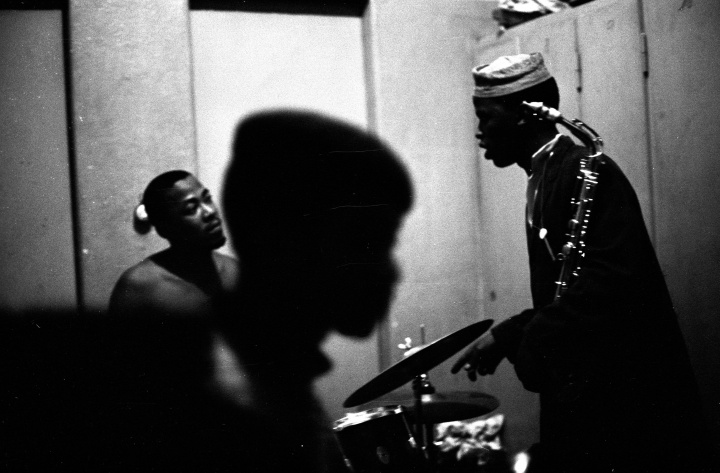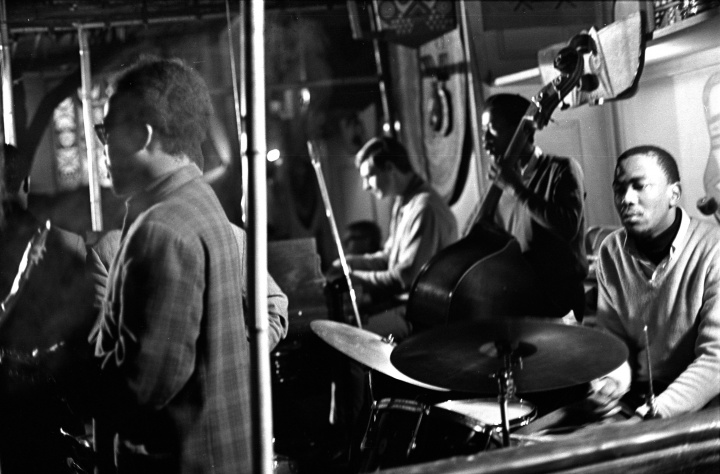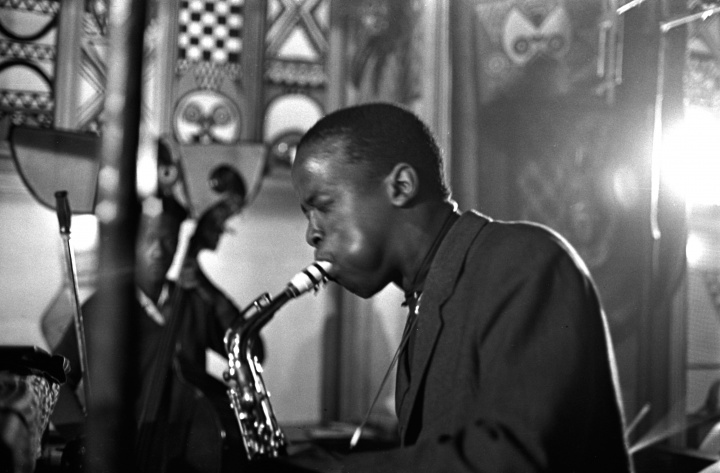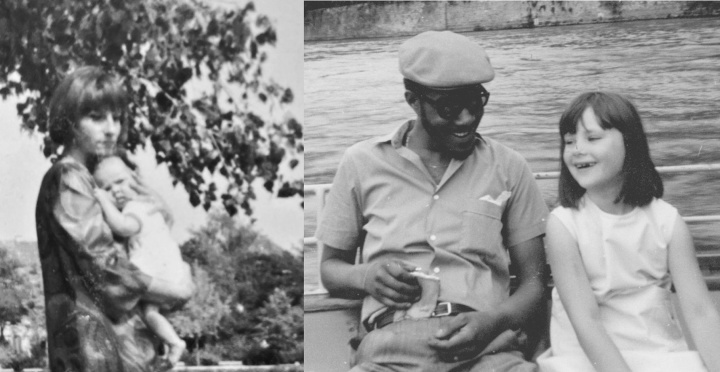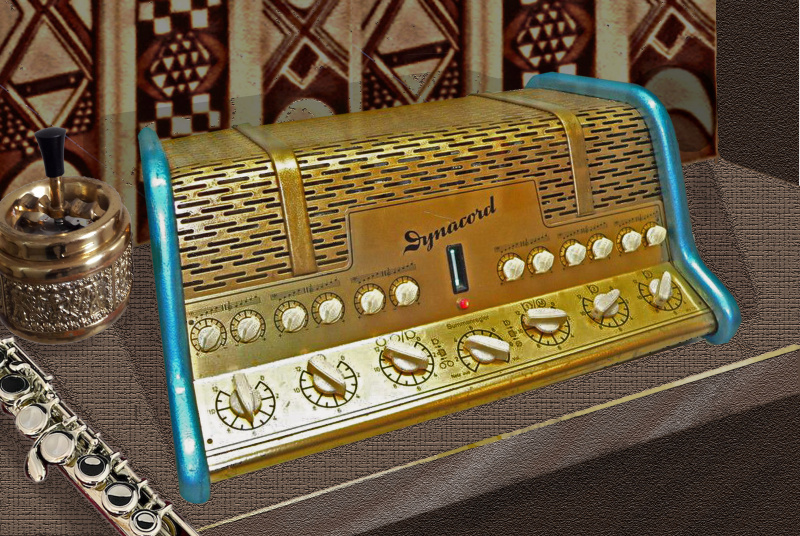BK - Many were influenced by the most modern jazz of the 50s. However, Remo and his musicians were already playing newer hardbop tunes by Horace Silver, for example. A stylistic change slowly took place with Irene Schweizer, who was certainly influenced by McCoy Tyner and Coltrane on the one hand, and of course by Dollar Brand. My favorite was definitely her drummer Mani Neumeier, who played a kind of "jungle drums". Kind of new and exotic. House drummers Alex Bally and Johnny Burrows were more fond of familiar late fifties drummers. At that time I had come up with an internal "style assignment", which musician was influenced by whom: Cousin Hans certainly by Lee Morgan, Miles or Booker Little (dry, cool approach), Franco Abrosetti = technically lively like Freddie Hubbard, Tutilo Odermatt by Winton Kelly (definitely his god, he had confessed to me once), Bruno Spoerri was rather cooljazzer (Mulligan - Westcoast), Peter Candiotto's "cry me baby alto sax" similar to Cannonball Adderley. Mario Schneeberger from Bird, Fredy Meier was the "Rollins" from the Aff and bassist Hans Hartmann had a strong sinewy grip on it like Mingus and Peter Frei was the first to break up the bass playing like bassist Scott LaFaro in the Bill Evans Trio. etc.
Remo Rau and Co:
At first, the experienced protagonists of modern jazz were certainly the musicians around Remo Rau:
Hans Kennel, Bruno Spoerri, Alex Bally, Hans Foletti, Peter Candiotto, Johnny Burrows, Franco Ambrosetti, Raphael Waeber, Fredy Meier, Tutilo Odermatt, Mario Schneeberger, Hans Hartmann, Nick Bertschinger and others…
And of course there were bands that had been performing all the time, like the Röbi Weber Trio, Red Bahnik Trio, Melch Däniker Trio, and so on.
Irene Schweizer joined with Mani Neumeier and Uli Trepte a bit delayed. Also Jürg Grau appeared at this time and he was then the first to play like Don Cherry on a pocket trumpet. I myself played with the Marcel Bernasconi Trio only from 1966 until the closing of the "Aff".
Mail from Hans Kennel on 02.01.2018:
"…Remo Rau was almost like a father to me musically. He "explained" a lot of what I needed to know for music history in an hour or so, with notes and time tables. I was so impressed. And just then, he hired Bruno and me to join his quintet…".

